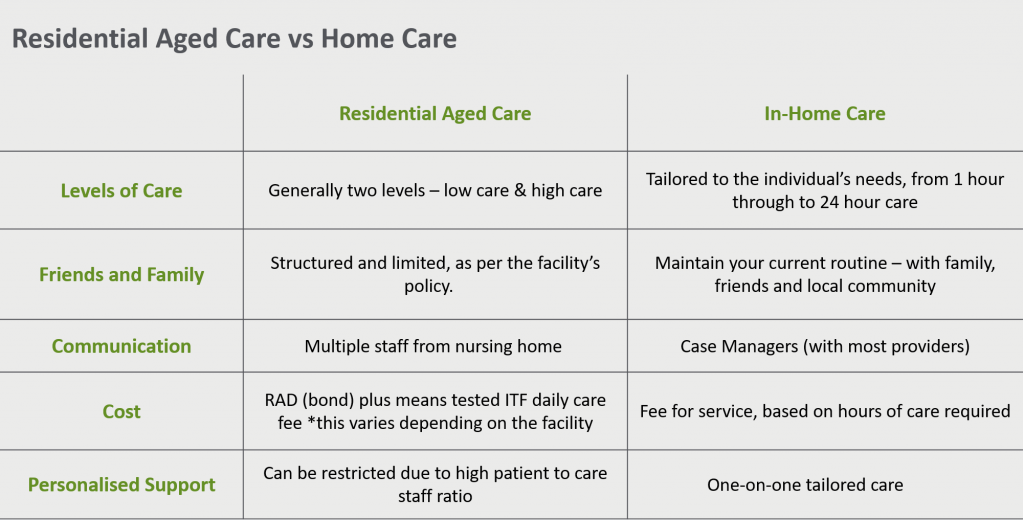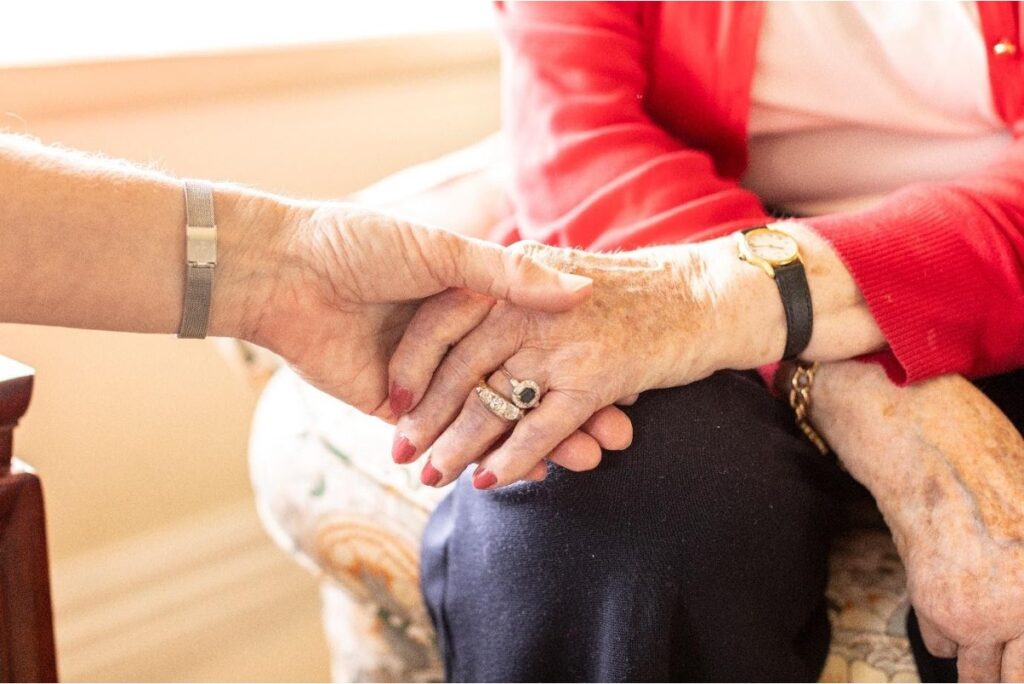Visitor restrictions to nursing homes, strictly limiting those who are permitted to enter the facility, has also had a big impact on residents and their families.
If your parent is currently living in a nursing home and you’re considering bringing them home or finding another alternative for their care, you’re not alone. A recent survey found 54% of people were considering taking their loved one out of residential aged care.
But where do you start? To help you understand your options as well as your rights and responsibilities, we’ve compiled this guide to removing your parent from a nursing home.
I want to take my parent out of a nursing home. What are my options?
Aged care residents can leave a residential aged care facility temporarily or permanently. Before you take steps to remove your parent from a nursing home it’s a good idea to be aware of your rights and responsibilities. The Department of Health has provided a list of considerations to keep in mind when considering taking a resident home from an aged care facility during the pandemic.
Temporary Leave
Instead of permanently removing your parent from their nursing home you may like to consider, or access one of the following temporary options:
Emergency Leave: The Department of Health states that residents of aged care facilities can access additional emergency leave until the end of June 2022.
Extra services are also available through the Commonwealth Home Support Programme for up to eight weeks to support emergency leave arrangements. This support covers meals, transport, individual social support, unaccompanied shopping, allied health and therapy services, and lower-level nursing and personal care.
There is no restriction on the amount of time that residents can stay with family while keeping their place in the aged care facility. In this situation, fees are continued to be paid as per the usual agreement with the aged care facility.
Social Leave: All residents of nursing homes can access 52 days of leave (overnight stays) during the year which may cover weekends and time with the family over Christmas or during special celebrations.
Switching to In-Home Care
There are multiple options available to support people to live at home. Family may want to bring a loved one into their own home and provide care themselves, organise an informal care arrangement from family members or access professional support for care at home, from an experienced service provider – or a combination of arrangements.
Government Funded Support: There is government funded support available such as the Commonwealth Home Support Programme or a Home Care Package provided by My Aged Care. In order to find out if you are eligible to access government-funded aged care services, the first step is to book an assessment. You can apply for an assessment online or call My Aged Care on 1800 200 422.
You may be placed on a waiting list, in which case you can choose to commence private self-funded care with a home care provider while you wait for your home care package to be allocated.
Additional support is also available for people in a caring role through The Carer Gateway.
Private Home Care: Fee for service arrangements can be tailored to meet all care needs from one hour to 24-hour care. You can also choose to top up your government-funded home care package with privately funded services.
Benefits of In-home Care vs Nursing Homes

Exiting an Aged Care Facility
After consideration you may decide that the best option is to move your loved one from a residential aged care facility back home.
As a nursing home resident, your loved one can choose to leave or move to another service at any time without penalty.
A lot of people mistakenly believe they will lose some or all of the lump sum they have paid, or that they need to wait for the nursing home to find a new resident before they get their money back. The lump-sum balance, less allowable amounts that have been taken out over the care period will be refunded. A new agreement will then need to be reached with the new aged care provider.
The Department of Health has outlined how lump sums and refunds are calculated for residential aged care. This will depend on the date of when the resident moved into the facility and individual payment arrangements (i.e., whether it is a mix of lump sum and rental-style).
To gain additional advice about an individual arrangement, contact the Older Persons Advocacy Network.
Making the Switch to Home Care
At Prestige Inhome Care, we can assist you and your loved one with switching from residential aged care to in-home care. Simply call our Care Specialist team on 1300 10 30 10 or book a free consultation here.
We’ll walk you through the process and help you understand all your options and the services we can provide, including 24-hour care.
Prestige Inhome Care is closely following and adhering to all advice from Australia’s Chief Medical Officer on the use of protective equipment, and local Chief Health Officers for the latest on restrictions.
Ensuring your Safety
The safety and care of our clients and employees is paramount. All care workers who visit client homes are vaccinated against COVID-19, as mandated by the Victorian and New South Wales governments, and adhere to strict infection control policies and procedures.
This is a revised version of the article published in December 2020.
